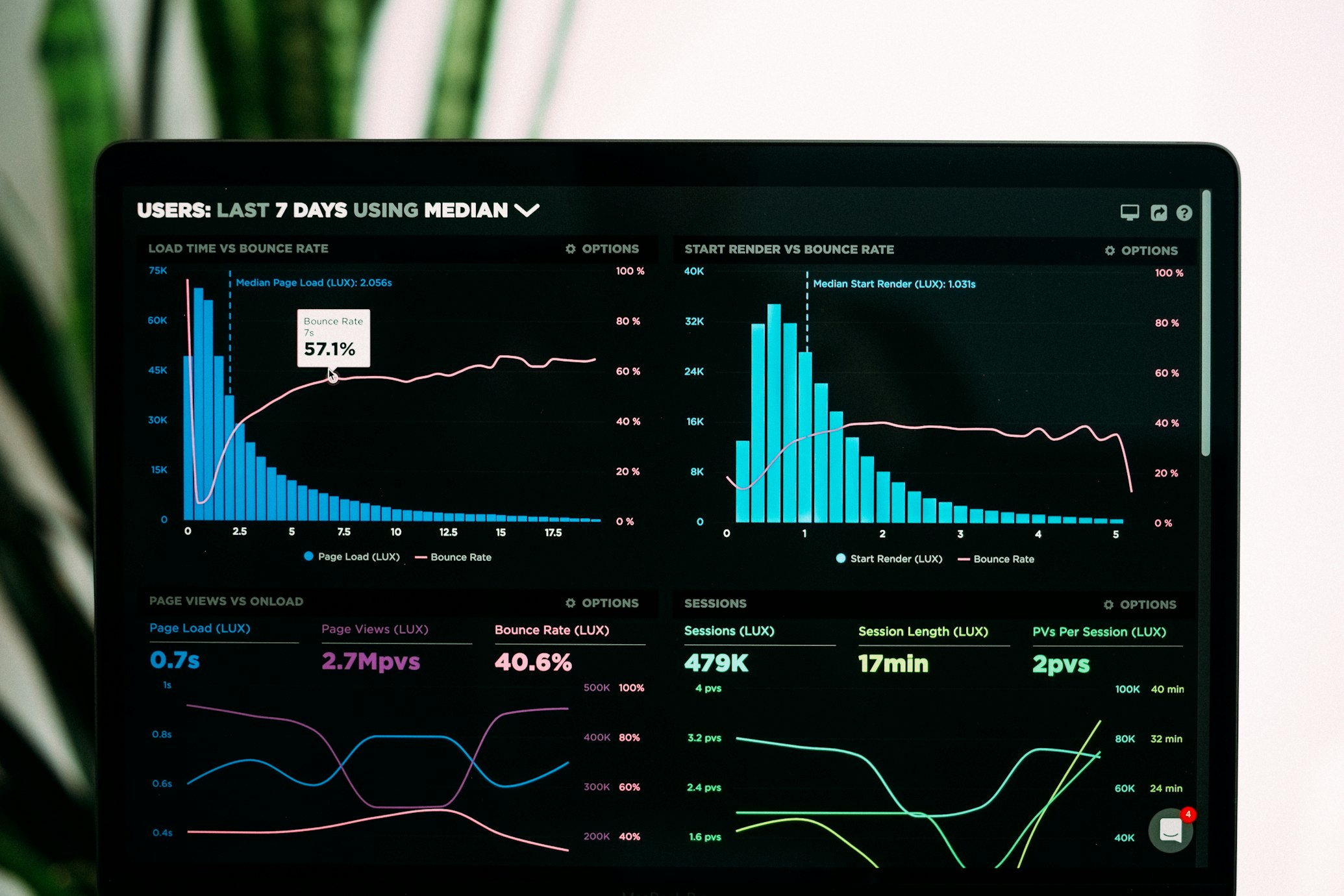How to Write a Meta Description That Wins Every Click
Imagine you’ve just published the perfect article. It’s insightful, well-researched, and solves a major problem for your audience. But when people search for your topic on Google, they scroll right past your link.
Why? Your digital storefront was closed.
On the crowded high street of Google's search results, your meta description is your storefront window. It's the 160-character pitch that convinces a searcher to come inside. Many businesses treat it as an afterthought, leading to low click-through rates (CTR) and missed opportunities.
This guide will change that. We'll provide a step-by-step framework to transform your meta descriptions from bland text into compelling "micro-ads" that boost traffic, improve engagement, and win the click.
The 160-Character Pitch: Why Your Meta Description Matters
Before we dive into the "how," let's get crystal clear on the "what" and "why." Understanding the role of a meta description is the first step to mastering it.
What is a Meta Description?
A meta description is the short paragraph of text that appears under a page's title in search engine results pages (SERPs). It’s an HTML attribute designed to give users a preview of the page's content before they click.

In your website's code, it lives in the HTML <head> section and looks like this:
<meta name="description" content="This is where your compelling, click-worthy description goes.">
The Myth: A Direct Ranking Factor
Let's clear up a common misconception: Meta descriptions are not a direct ranking factor.
Google confirmed years ago that they do not use the keywords in your meta description to rank your page. Stuffing it with keywords won't push you to page one; in fact, it will likely hurt your ability to attract clicks.
The Reality: An Indirect SEO Powerhouse
So, if it's not a direct ranking factor, why bother? Because its true purpose is far more powerful: to entice the user to click.
A meta description is a ranking factor for humans. When more people click on your result, Google receives a strong signal that your page is a relevant and valuable answer to their query. This high click-through rate (CTR) can indirectly influence your rankings over time.
Why Meta Descriptions Are Critical for Your Strategy
Neglecting your meta descriptions is like leaving free advertising money on the table. Here’s why they are a critical component of your SEO and content strategy.
Boost Your Click-Through Rate (CTR)
Your CTR is the percentage of people who see your link in the search results and actually click on it. A persuasive, relevant, and compelling meta description is your single best tool for improving this metric. Think of two results side-by-side; the one with the better description almost always wins the click.
Set User Expectations and Reduce Bounce Rate
A great meta description acts as an honest trailer for your content. It tells users exactly what they'll find when they land on your page. This pre-qualification is crucial. When a visitor's expectations are met, they are more likely to stay and engage. This lowers your bounce rate (visitors who leave after viewing only one page), another positive signal for search engines.
Enhance Your Brand Voice
Your meta description is often a potential customer's first interaction with your brand. It's a free, 160-character space to communicate your personality. Are you helpful and professional? Witty and modern? Authoritative and data-driven? Your description can convey this instantly.
Stand Out on a Crowded SERP
Even if you don't rank #1, a stellar meta description can steal clicks from the results above you. When all the titles look similar, a unique and benefit-driven description becomes the key differentiator. It’s your chance to shout, "Hey, my content is the best answer here!" This is especially true when your page earns rich snippets, as the description provides essential context.
The Anatomy of a Perfect Meta Description: 8 Essential Elements
Ready to start writing? Follow these eight principles to craft a meta description that works every time.

1. Nail the Optimal Length (155-160 Characters)
While Google doesn't have a strict character limit, it does have a pixel-width limit. After a certain point, your description will be cut off with an ellipsis (...), ruining your message.
- Best Practice: Aim for 155-160 characters. This is generally a safe length to avoid truncation on both desktop and mobile devices.
- Pro Tip: Use a free online SERP Snippet Generator to check your length and preview how it will look on Google.
2. Include Your Primary Keyword Naturally
While not a direct ranking factor, including your target keyword is essential. Why? Because Google bolds the searcher's query terms in the meta description. This bolded text instantly draws the user's eye and confirms your page is relevant to their search.
Warning: Do not keyword stuff. "Our guide on how to write meta descriptions is the best meta description guide for writing meta descriptions." This is unreadable and spammy. Focus on natural, user-friendly language.
3. Use an Active Voice for Direct Engagement
Passive voice is weak and indirect. Active voice is powerful, direct, and encourages action.
- Passive: "The secrets to writing great meta descriptions are covered in this article."
- Active: "Discover the secrets to writing great meta descriptions in our complete guide."
Active voice speaks directly to the user, making your pitch more persuasive.
4. Craft a Compelling Call-to-Action (CTA)
Don't just describe your content; tell the user what to do next! A clear call-to-action transforms your description from a passive summary into an active invitation.
- For blogs: "Learn more," "Read our guide," "Find out how."
- For e-commerce: "Shop now," "Explore the collection," "Get yours today."
- For services: "Get a free quote," "Start your free trial," "Book a demo."
5. Answer the User's Question (or Promise an Answer)
Think about the user's search intent. What problem are they trying to solve? Your meta description should directly address their pain point and promise a solution. If the query is "how to fix a leaky faucet," your description should promise a step-by-step guide, a list of tools, or a video tutorial.
6. Match Your Content's Promise (Be Honest)
Clickbait is the enemy of good SEO. A misleading meta description might earn a click, but it will also earn an immediate bounce when the user realizes your content doesn't deliver. This high bounce rate signals a poor user experience to Google. Be accurate and honest about what's on the page.
7. Make it Unique for Every Single Page
Duplicate meta descriptions are a red flag for search engines and a terrible experience for users. Each page on your site has a unique purpose, and its description must reflect that. A generic, duplicated description tells Google that your pages might be low-quality or thin on content.
How to fix it: Use tools like Google Search Console or an Ahrefs Site Audit to find and fix duplicate or missing meta descriptions.
8. Showcase Your Unique Value Proposition (UVP)
What makes your page, product, or service better than the competition? Is your guide more comprehensive? Is your product eco-friendly? Do you offer free shipping? This is your Unique Value Proposition (UVP). Weave it into your description to stand out.
Example: "…Featuring breathable mesh and patented cloud-foam soles. Free shipping included."
Good vs. Bad Meta Description Examples
Let's see these principles in action.
Example: Blog Post
- Query: "how to write a meta description"
- Bad: "This is a blog post about writing meta descriptions. We talk about length and keywords and other things you should know about for SEO."
Analysis: Passive, boring, no clear value, and no CTA. - Good: "Learn how to write meta descriptions that win every click. Our expert guide covers 8 essential tips, from optimal length to crafting a powerful CTA. Read now!"
Analysis: Active voice, includes the keyword, promises specific value (8 tips), and has a clear CTA.
Example: E-commerce Product Page
- Query: "lightweight running shoes"
- Bad: "Running Shoe Model X-123. Available in blue, red, green. Made from synthetic materials. SKU: 45678. Weight: 250g."
Analysis: A dry list of features that fails to sell the benefit or experience. - Good: "Experience ultimate comfort on your next run with the Model X-123. Featuring ultra-light, breathable mesh and patented cloud-foam soles. Free shipping included. Shop now!"
Analysis: Focuses on benefits ("ultimate comfort"), highlights the UVP ("patented soles," "Free shipping"), and includes a strong e-commerce CTA.
Example: Homepage
- Query: "[Company Name]"
- Bad: "Welcome to the homepage of [Company Name]. We sell a variety of products and services for our customers. Click here to learn more."
Analysis: Generic, uninspired, and tells the user nothing they don't already know. - Good: "[Company Name] offers award-winning project management software to help teams streamline their workflow. Trusted by 50,000+ users. Start your free trial today!"
Analysis: Clearly states what the company does, builds trust ("award-winning," "Trusted by 50,000+"), and presents a compelling, no-risk CTA.
How to Add and Test Your Meta Descriptions
Writing the description is half the battle. Now you need to implement and test it.
Implementation on Popular Platforms
- WordPress: The easiest way is with an SEO plugin like Yoast SEO or Rank Math. In your page or post editor, you'll find a "Meta Description" field where you can type your text, complete with a helpful character counter.
- Shopify/Wix/Squarespace: These platforms have built-in SEO settings. Look for a section labeled "SEO" or "Search Engine Listing Preview" within the settings for each product, page, or blog post.
- Custom HTML: For a hand-coded site, add the meta tag directly into the
<head>section of your page's HTML file:<meta name="description" content="Your amazing, click-worthy description goes here.">
What to Do When Google Rewrites Your Meta Description
Sometimes, you'll write the perfect meta description, only to find that Google is showing something completely different. Don't panic! Google often rewrites descriptions if it believes a different snippet from your page is a better match for a specific user query.
If your original description is consistently being ignored, it might be a sign that it doesn't align well with user intent or the content on the page. Consider revising it to be more relevant.
Measure Success with Google Search Console
The ultimate test of a good meta description is its performance. Google Search Console (GSC) is the best free tool for this.

- Go to the Performance report in GSC.
- Click the Pages tab to see a list of your top-performing pages.
- Click on a specific page you want to analyze.
- Now, click the Queries tab to see which search terms are driving impressions and clicks to that page.
Pay close attention to the CTR. If a key page has high impressions but a low CTR, its meta description is a prime candidate for an update. You can even A/B test different descriptions over a few weeks to see which version performs better.
Your Meta Description is Your Digital Handshake
A meta description is so much more than a technical SEO task. It's your digital handshake, your 15-second elevator pitch, and your most important salesperson on the SERP.
By focusing on these key takeaways, you can transform your search snippets into click-generating assets:
- Keep it concise: Aim for 155-160 characters.
- Be relevant: Include your keyword naturally.
- Be persuasive: Use active voice and a strong CTA.
- Be valuable: Answer the user's question and highlight your UVP.
- Be unique: Write a custom description for every single page.
Start optimizing your meta descriptions today. It’s a small detail that delivers a massive impact on your traffic, brand perception, and bottom line.
